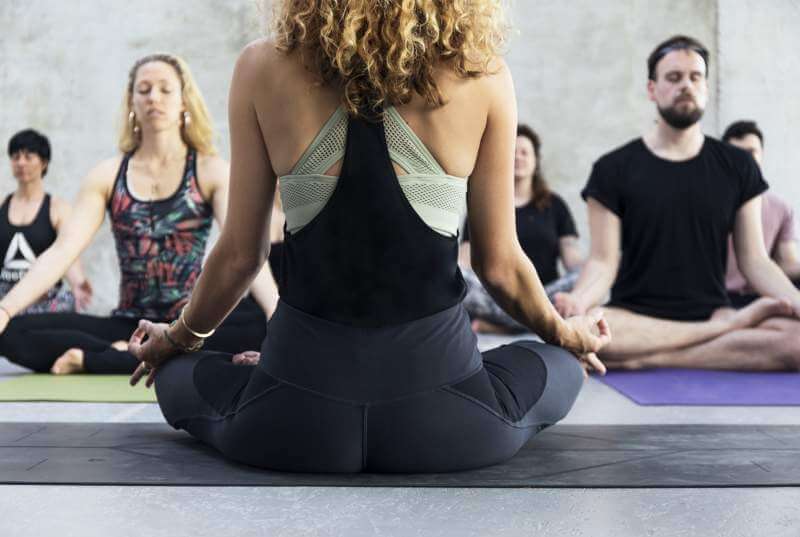"The goal of meditation is not to get rid of thoughts or emotions. The goal is to become more aware of your thoughts and emotions and learn how to move through them without getting stuck." Dr. P. Goldin
Meditation is one of the things we know are good for us; yet it seems so difficult to establish a regular routine. I just don’t have time for meditation, is what most people say. Or, I can’t meditate, my thoughts just won’t stop running.
A regular meditation practice is more powerful and efficient in decreasing stress and anxiety and increasing focus, energy and creativity than any other activity, or even medication. Finding stillness in meditation, you get to know and understand yourself better and gain perspective on what truly matters in your life. It doesn’t need any equipment, any support of others and it’s completely free and accessible for anybody.
To encourage you to give your daily meditation another try, I’m sharing my tips to get a personal practice started and to stick with it.
First, let’s let go of the idea of a meditation in which you have to sit in an uncomfortable position for long periods of time with a mind clear as still water. Meditation is not supposed to be arduous! It’s supposed to feel good, soothing. So, start small, don’t stress about achieving anything and follow the next steps…
- Set realistic goals.
Start with 5 or even just 3 minutes a day. Even the busiest person can find 3 minutes in their day, and these few moments will already make all the difference. You can consider increasing your meditation time later.
- Start with a daily set time.
The easiest way is to meditate right after you get up in the morning. Even the most unpredictable days starts with getting out of bed, every single day. If you meditate first thing in the morning, you have done it, nothing unexpected can get in the way in the course of your day. It is also a beautiful way to start the day mindfully and set the tone for the next 24 hours. You can choose any other time of the day, after lunch, before you go to bed. However, sticking to a fixed time (at least for the beginning) helps to make it a habit. If you still find excuses, set a daily alarm to remind you.
- Choose a comfortable position.
Sit comfortably, on a cushion, a chair or against a wall. Legs, face muscles and shoulders relaxed. Your spine elongated so your breath and your energy can flow easily through the body. A change in posture will immediately have an energizing effect, on your body and your mind, and facilitate your meditation practice. You can try it while reading these very lines; sit upright, take a breath into your chest, feel how that breath lifts you up and you don’t need all that much muscle strength to sit upright. Do this where ever you feel comfortable, your bedroom, living room, outside or even in the bathroom, if you don’t live alone and feel distracted by the presence of others.
- Chose a method that suits you and makes it easy to get into the practice. Here are 3 things I like to do:
- Mentally repeat a mantra.
By focusing your attention on a word or a sentence you can take attention away from your usual thoughts and stay present. It also creates a more positive energetic environment. Mantras I like to meditate on are “Let go” (inhaling let - exhaling go) helping you to release tension or “So Ham / I am” (inhaling I - exhaling am) honoring your existence, or simply “I inhale – I exhale”. You can also choose your own positive affirmation that resonates with you.
- Count the length of your breath.
Inhale for 1..2..3..4..5.. exhale for 1..2..3..4..5. This gives you something to focus on and trains your mindfulness and concentration. While you count the length of your breath you are not controlling it, but merely observing the natural pattern of your breath flowing in and out through your nose. Naturally your breath will become longer and calmer having the same effect on your mind – slower breath, slower thoughts.
- Practice observation.
Observe your thoughts and your emotions that arise when you sit in silence. Don’t try to stop or direct them, instead let them come - all of them - and practice not being affected by them, not following them, not judging them or forming and opinion. Just looking at them like clouds passing the sky. Observe them and let them move on. It is a bit more challenging than the previous methods since we get dragged into thought patterns easily, but if you gradually manage to stay neutral and unaffected, it is beautifully liberating to see how the thoughts just disappear again by themselves.
Try and see which resonates with you. Stay with it for a while so you can notice your progress – it gets easier and easier with each time and at some point, it feels beautifully simple and calming. And this is the most important thing: Stop seeing meditation as a chore! Consider it selfcare, like your daily shower, your nutrition or work-out.
It is really just the beginning that might seem difficult. Over time, the benefits of the meditation practice will become very obvious and reward enough to maintain the habit - you will look forward to those few peaceful moments of silence in your day.
I hope this helped you and motivated you to give it another try. Happy meditating!
